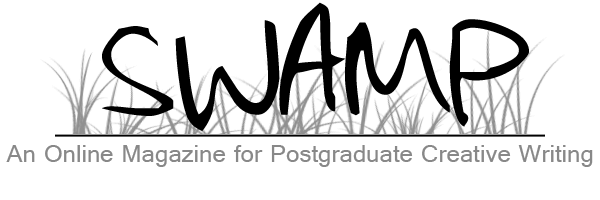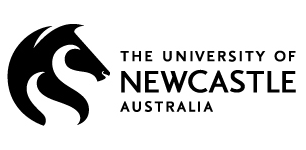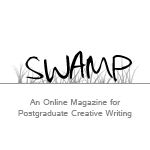SLIP STITCH
Madeleine Ballard (Te Herenga Waka Victoria University of Wellington)
January / Second skin
Black six-wale cotton corduroy, black polyester thread, palest pink linen, scarlet cotton embroidery thread, 25mm black corozo buttons // Fabrics-Store.com Paola Workwear Jacket
It’s the last week in January when my colleague sends the team an email to review. It’s meant for our many magazine subscribers and opens chattily by wondering whether it’s correct to say ‘Chinese New Year’ or ‘Lunar New Year’. I did some digging and you know what, I have no idea who’s right, my colleague writes. This year, at least, it seems like both the Chinese and Lunar New Years fall on the same day, so how about we split the difference and just refer to it as the Year of the Tiger? Sounds cooler anyway. My whole body feels hot and numb as I read the sentences, which seem to be saying: These differences don’t really matter, right? I don’t know, and you don’t know, and so, who cares.
I wonder how to respond. Two other colleagues come back with praise for the funniness of the email elsewhere. Nobody says anything about the first paragraph. I write a very careful message, one that recommends ‘Lunar New Year’ because many cultures celebrate the beginning of the lunar calendar — one that corrects without scolding.
I think, as I always do at such moments, of more aggressive encounters I’ve had: the man who shouted a slur from his car, the guest who asked if I was the help, the two men pulling at the corners of their eyes towards me outside the train station. This is mild, by contrast, but I think its mildness makes it more insidious. I wonder how my email reads to everybody else. My colleague makes the change with good grace, although nobody apologises.
Several hours later I still feel ill about it. I need to keep my helplessness at bay, so I cut out an oversized black corduroy jacket — six-wale corduroy, soft enough to drowse in. I’ve been meaning to make this jacket for months. I made an identical one for my boyfriend’s birthday and wear it so often, the sleeves rolled back three times, he’s started hanging it on my side of the closet.
Corduroy sulks; when I brush my hand across it, the fibres refuse to lie down smoothly in one direction. If I don’t cut all the pattern pieces facing the same way, the garment looks patchy in the light. It’s messy to sew with corduroy, too, fluff freckling the carpet and catching in the bobbin case. But I am using a favourite pattern, the Paola Workwear Jacket, and I don’t even need the instructions. I turn the flat-felled seams quickly and surely; I eyeball the pocket placement with ease. I sew seam after seam, seething and methodical, and I have rarely made something so free of mistakes.
When I try on the jacket the next morning, I know that I will wear it all the time: it makes me look like myself. But it needs a lining. I want a jacket with a rich inner life. I think about embroidering a line from a favourite poem, but I am still heavy and hurt from yesterday. I shrug off poetry like an unwanted hand on my shoulder.
Instead, I ring 婆婆 | Por Por, the most cheerful person I know. Hi 麗麗 | Lai Lai! she chirps down the phone at me, like always. How are you, how is your work? She says it exactly like this, how is your work? and I think first not of my job at the magazine, but of the jacket I am working on, and this essay I am writing. It turns out I know exactly what I want to embroider. I ask her to write down the characters of her name and my mother’s name and her mother’s name and mine — all the female family members’ names, as far back as she can remember. She’s bemused by the request, but when I visit her that weekend, she gives me the names, each on its own slip of paper. 自愛, 錦雲, 麗瑶, 文麗. Each of the names contains other nouns, so the slips are starred, too, with beauty and grace and love. I trace each name with tailors’ chalk onto scraps of the palest shell pink linen. This will be my lining.
My anger dissipates. The Lunar New Year comes and goes, and we toss the 魚生 | yu sheng salad as high as the light fittings, and we eat the enormous prawns and the fatty, salty 烧肉 | siu yuk, and we exchange, as always, wishes for each other’s prosperity. It takes me several sittings to embroider all the names on my linen in lucky red thread: the names of those who made new lives for themselves away from war, in a country where the new year happens resolutely on 1 January. When I’m done, I cut the names out and slipstitch the pieces of linen into the jacket with black thread. There is no particular configuration: two are mostly hidden in the sleeves, three dot the back. I sew in my name, a nudge bigger than a postage stamp, where a label might go. 婆婆’s name is at the front, where I will always see it as I pull the jacket closed.
The evening I complete my jacket, I move my boyfriend’s back to his side of the closet. I wear mine at least once a week, the secret of the lining held close to my skin like a kind of external knowledge. I look braver than I feel.
April / Silver lining
Double-faced grey plaid and fawn wool coating, silver viscose, dark grey polyester thread, silver polyester thread, heavyweight fusible interfacing, 30mm black corozo button // The Fabric Store Poppy Coat
The first chill of autumn is in the air when I move in with 婆婆. She urges me to hang my clothes in the wardrobe, but I don’t want to take them out of the suitcase. On the first day, when I feel like hiding in a small, dark space for hours, she makes me chicken for dinner and says, with unbearable concern, 麗麗, now you will not get married, to which I say — absolutely nothing.
I decide to sew something complex and labour-intensive to keep my sadness only a shadow while my hands make something of nothing. Several months ago, I decided I would make a TFS Poppy Coat come winter, an oversized, proper, cold-weather coat, with a single button closure and a big, soft, rounded collar. It’s not winter yet, but I am cold all through, and half my clothes are still at the old flat, so I start the coat.
Coats are my favourite type of garment because they represent a kind of escapism. Auckland is never really cold enough for a coat, but wearing one in grey July makes me think, anyway, of snow falling on woollen shoulders, as it does in all the cities I’d like to live in. More importantly, wearing a coat means feeling held. A coat is protection against weathers external and internal.
I have never been good at sewing slowly — it’s too exciting going fast — but I don’t get a choice here. I print the pattern in A0 at a local copy shop. Then, on Instagram, I look at Poppy Coats made by sewists around the world. Poppies cut from old woollen blankets, shearling with checked lining, lilac cashmere. I read all the captions and take notes on recurring advice: size down two to three sizes, practise the pockets; use a point turner, press every single seam. I lay out my fabric, a heavy brushed grey wool plaid, bought months ago on sale, and steam it with patience. Perhaps, for once, I will do it all as I should.
The Poppy Coat is the most difficult garment I’ve ever made. It takes me a whole morning to learn to make welt pockets, those funny formal rectangular pockets you get on school blazers or the backs of suit trousers. I smooth my grandma’s sputtery iron over many metres of interfacing, a lengthy process with pattern pieces this big. I cut my lining — a liquid, silvery viscose that slithers wildly under the chalk — on the hard white tiles of the bathroom floor, the pattern weighted with library books. By the time I have sewed the shell together and it looks like a coat, with functioning pockets and half the collar, I have been sitting at the machine for seven hours — so long I can barely straighten my neck anymore. The wool is too heavy to press the seams open properly and the bobbin thread keeps snapping because I’m sewing three thick layers too quickly, and, on second thought, perhaps I’ve snipped just a millimetre too far into the corner on one of the welt pockets, which means I’ll need to patch the back before I put the lining in. But the coat is a coat, made for my body by my hands.
Like gardening, sewing is an investment in the future — in what sort of person your future self will be and how she will feel about her body, and what she will want to wear. I choose this grey plaid and cut it to my size thinking unashamedly of myself and how I want to feel, which is not how I feel now.
More fundamentally, as writer Sofi Thanhauser puts it, ‘Sewing something for yourself implies belief in a future self.’ Pressing the lining today means I will stitch it into the outer shell tomorrow. Inserting a pocket now means one day it will hold my hand. I clip into the collar corners; learn and execute the finicky couture of buttonhole stitching by hand; wrestle determinedly with the petulant lining. Sewing means proving to myself I haven’t given up on either work or joy.
My cousin Lisa is also making a coat. We share one sewing relative — her grandmother, my great-grandmother — who died when we were small. But both of us remember her knotted hands, which cooked 炒飯 | chao fan for sixty years, and tended the garden, and made the whole family’s winter coats. Lisa is making a Papercut Patterns Nova Coat of two contrasting black and brown tweeds. Her coat is minimalistic, a clean cocoon shape, while mine is sweeping and romantic. She reminds me that an entirely other sensibility is possible. We sew our coats together and, on the days we are apart, we send each other progress pictures — us in half-coats, in single sleeves, threads bird-nested at hems, everything unfinished and promising. It is just what I want.
Lisa finishes her coat before me and sends me a picture taken in front of her bathroom mirror. She looks fantastic. It remains amazing to me that this silly little hobby of ours could turn out something that looks like an actual coat. When I next see her, she is wearing her coat out in the world, an idea made real. It looks as good as anything you could buy, but she shows me how at the hem, where the lining meets the shell, there is a slight misalignment: a reminder it was made by inexpert hand. I think this is quite beautiful in her coat, but when I attach the lining of my own coat to the shell and it’s similarly crooked, I feel annoyed. I hate this feeling and this month I’m tired of my feelings — and what I end up doing, after unpicking twice, is letting it be. I move on to the next step, so eventually I can send Lisa a photo taken in front of my grandma’s bathroom mirror.
I don’t know what to make of this slip of time. I rise each morning at six; I read before work; I make small, simple meals. The rice cooker lisps beside the stove; the orchids pose stark and flowerless in the living room. The washing machine plays an irresistible electronica version of Die Forelle to announce the end of a cycle. I enjoy my enjoyable job; I save money; I have not one single drink, and in many ways, I feel good. On the other hand, I still wake too early every single day, in the middle of a panicked half-dream in which I am looking and looking — inside my suitcase, beneath the bed, in the drawer at the old apartment where I kept old keys and shopping bags — for something I’ve lost and cannot have back.
The day I finish the coat, I have been living with 婆婆 for a month. She grew up in an era when you sewed not for pleasure but because you could not afford to buy clothes, and she is amused by the coat saga. Every afternoon, she calls one of her many friends for a gossip — about what so-and-so paid for her house, which family member has caught Covid now, and me. She still hasn’t realised I can understand almost everything she says in Cantonese. I hear her telling everyone she knows that for some reason I am making a coat, and that she’d like me to stay.
Maddie Ballard is a writer from Aotearoa New Zealand, currently undertaking a Masters in Creative Writing with the International Institute of Modern Letters at Te Herenga Waka Victoria University of Wellington. Her work can be found in publications including Starling, The Pantograph Punch, and Turbine | Kapohau, and she writes a semi-regular newsletter here.






